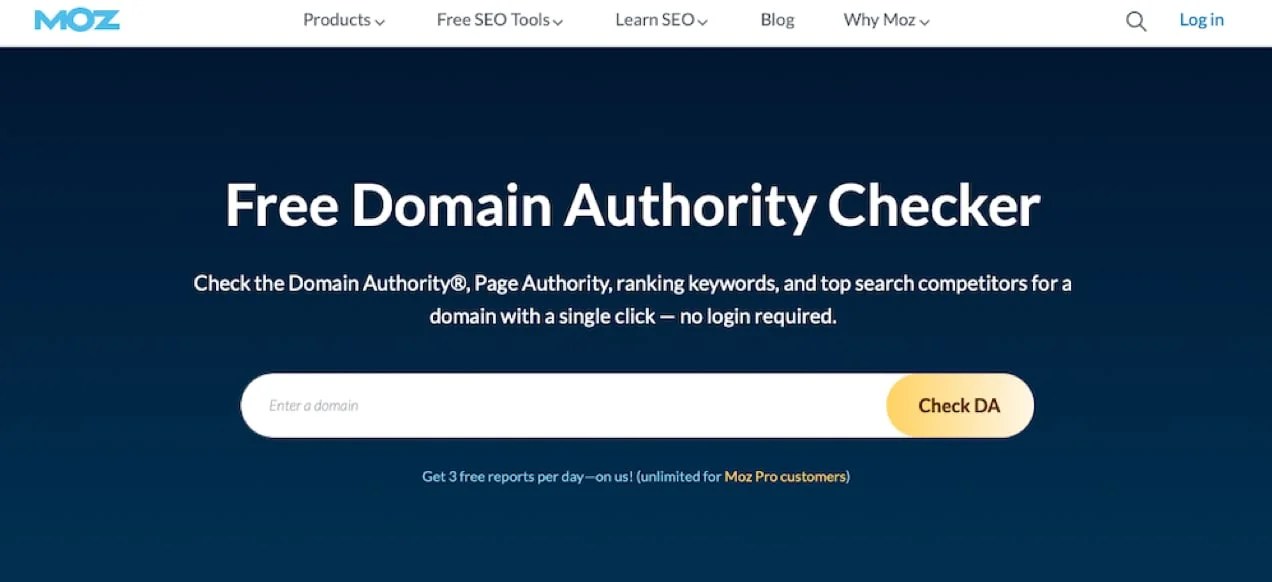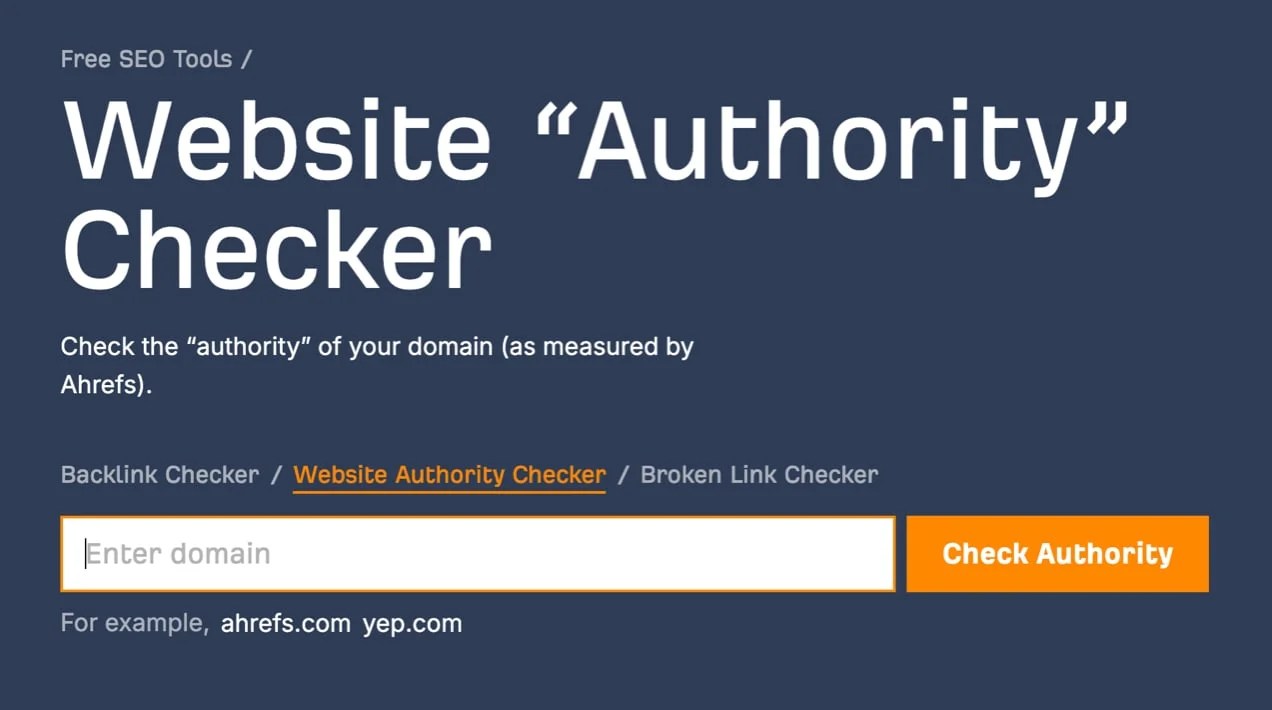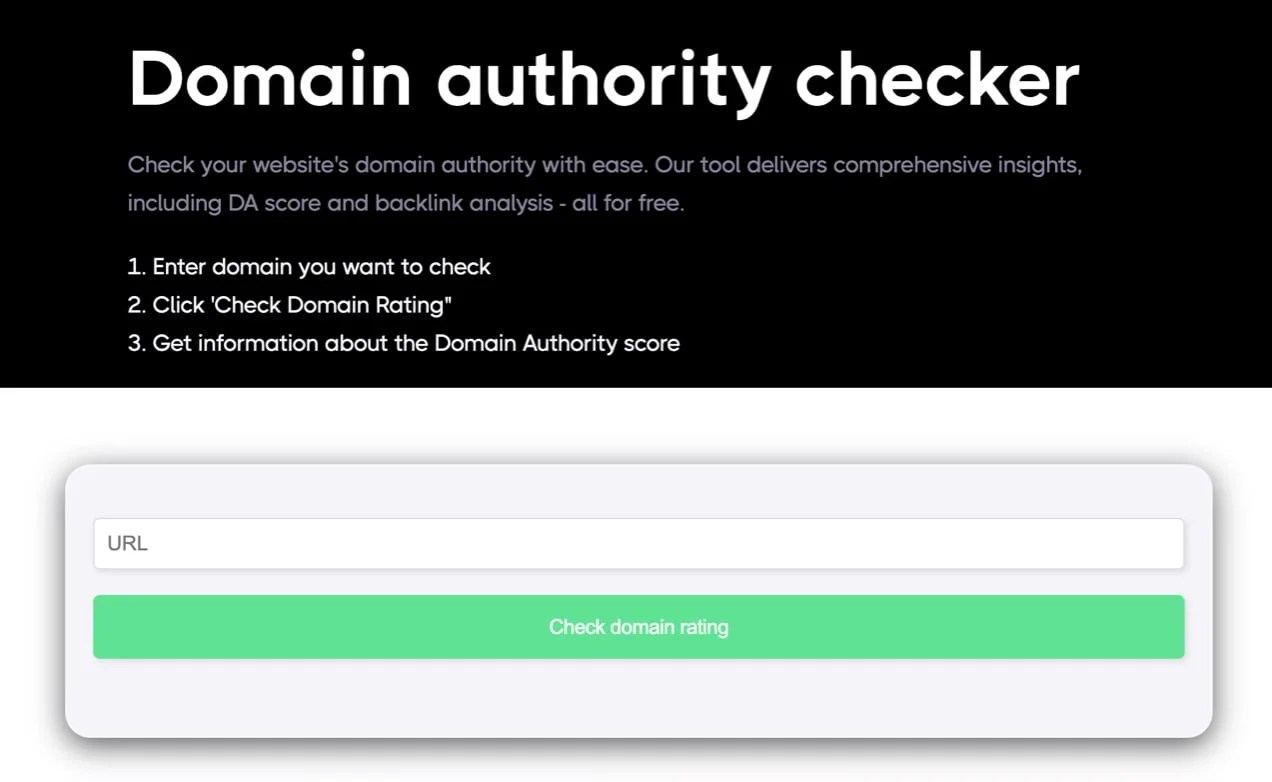Grabbing a top spot on Google is a win for visibility and essential for driving clicks and traffic to your site. A recent Backlinko study found that the first organic search result receives an average click-through rate of 27.6%. The numbers drop sharply for each result below the first option, and less than one percent of searchers even browse results on the second page, much less click through.
The competition for those top positions is fierce, and domain authority (DA) plays a critical role in determining who wins these spots.
Domain authority gauges a website’s likelihood of ranking in Google search results based on its overall quality and link profile. While not an official Google ranking factor, it provides valuable insight into how search engines evaluate your site against others.
Understanding what this means and how to increase your domain’s DA score goes a long way towards seeing great SEO success. This guide will help you get up to speed. In it, we’ll unpack what domain authority is, how it’s calculated, and why it matters for ranking where it counts — page one.
What is domain authority?
↑ Back to topDomain authority is a measurement that predicts the likelihood of a website’s search engine ranking against similar sites.
It was originally developed by Moz, an SEO software company, and the concept became so popular that other companies launched similar measurement tools.

Domain authority looks at a site’s overall content, structure, and credibility. It then assigns a score between zero and 100 with greater scores signaling an increased likelihood of ranking higher than competing sites.
The important thing to remember is that a website’s domain authority is a relative measure. Instead of focusing on the absolute score, companies should evaluate their score against their direct competition instead.
Fortune 500 companies may compete at the top range of domain authority scores while a rural mom-and-pop store may easily achieve top ranking in its local area with a domain authority score of 25.
For all businesses, a website’s domain authority is a useful and simple measure to gauge how their site is performing against the competition and assess how ongoing marketing initiatives are contributing to success.

What’s a good domain authority score?
↑ Back to topSince domain authority is a measure of authority relative to the sites in a particular niche or area, that’s actually not a good question to ask. It’s sort of like asking, “What is the best shirt to wear?” The answer depends on a wide variety of factors like personal preference, comfort, weather, body shape, and more.
Instead, domain authority measures may help you understand what’s going on with particular competitors as well as how you measure up against them.
So a good domain authority score is simply one that’s comparable, or higher, than your competitors.
How is domain authority calculated?
A score of less than ten may indicate an up-and-coming shop with a new website that simply hasn’t had time to accumulate backlinks or one you can disregard because it’s full of spam and unreliable content.
A site in the mid-range level of 30 or 40 may indicate a store with an established presence or brand in a narrow niche or specific geographic market. Competing successfully with such an establishment may not be as difficult as competing against multi-million dollar box stores.
Finally, online stores that rank in the top fifth with domain authority scores higher than 70 are usually household names, known for their authority and trustworthiness.
Why is domain authority important?
↑ Back to topWhile Google and other search engines don’t use high domain authority scores as a direct ranking factor, the metric is still valuable for assessing a website’s overall strength and competitiveness on the search engine results page.
Domain authority serves as a proxy for evaluating how well a site may perform in search engine rankings compared to competitors.
A higher score often correlates with better search visibility and increased trustworthiness in visitor’s eyes. After all, according to Ahrefs, 90.63% of pages with no backlinks get no organic traffic from Google. That’s all the more reason to invest in building authority through strong backlinks.
Tracking domain authority provides a quantitative way to monitor your website’s performance over time. It acts as a benchmark for evaluating the effectiveness of your digital marketing strategy and identifying areas for improvement. You can then use this information to adjust your strategy as needed.

What affects domain authority?
↑ Back to topSeveral factors affect domain authority, including high quality backlinks, content quality, website structure, social media signaling, and site performance. Considering each of these factors (and working to improve them) can help you methodically increase your domain authority score.
Let’s look at each of these factors and discuss what they entail:
Backlinks
Backlinks are links from external websites pointing to your site. Search engines view these as endorsements, signaling that your content is valuable and authoritative within your niche or region.
While the quantity of inbound links matters, the quality and relevance of those links are far more important. Links from reputable sources, like well-known companies, local news outlets, or industry associations, carry more weight. Also, the domain authority of the linking domains themselves affects how much a backlink contributes to your score.
At the same time, you’ll want to eliminate low-quality, spammy backlinks as they can actually hurt your domain authority.
To build a strong backlink profile:
- Seek links from other websites — credible sources like partner organizations, suppliers, influencers, and community platforms.
- Avoid rapid link-building schemes, as slow and steady growth signals a trustworthy site.
- Monitor and disavow low-quality or spammy backlinks as they can harm your domain authority.

Content quality
Domain authority relies on your ability to create unique, relevant, and engaging content that adds value to your audience. Great content attracts visitors because people want to engage with it, but it’ll also naturally earn backlinks. This improves both domain authority and search engine rankings.
You may also want to check out the best-performing pages and content from your direct competition to help inspire new ideas on what your niche is interested in. Most importantly, add content regularly and steadily.
To ensure strong content:
- Publish well-structured, easy-to-read content and update it regularly.
- Offer fresh insights, helpful tips, or local market surveys instead of repeating widely available information.
- Check your competitors’ best-performing content for inspiration and ideas.
Consistency matters. Adding content steadily over time will build your site’s credibility and authority.
Website structure
Just like a well-organized company is more likely to be productive and efficient, a well-structured website with logical sections, sub-sections, and calls-to-action will be easier for visitors to understand and navigate. This leads to greater engagement, which indicates that the owner of the site is capable, reputable, and trustworthy.
Consider incorporating internal links strategically to refine your overall website structure. Doing this boosts page authority and helps search engines better crawl your site and appropriately index individual pages.
Finally, make sure that your technical SEO is sound. Check meta titles, descriptions, and headers for appropriate keywords that reflect the overall content and completeness.

For this, using an extension like Yoast SEO Premium for WooCommerce is a good idea. It places fields for optimizing technical SEO directly in the WordPress editor.
Social media signaling
Social media engagement amplifies your website’s visibility, drives traffic, and indirectly influences domain authority. While not a direct Google ranking factor, social signals — like shares, likes, and comments — can increase your brand’s reach and generate backlinks.
There’s no need to set up accounts on every platform. Select social media channels that are appropriate for your business. Then be an active user. Participate in discussions, share high-quality content, and otherwise get involved.

All of this activity will attract new visitors, boost engagement, and increase the visibility of your brand, even though it’s not a ranking factor. Your content may be pulled into third-party aggregation sites and attract additional backlinks, all of which increase your overall domain authority.
Here are a few best practices to follow:
- Choose platforms that align with your audience and business goals.
- Encourage sharing by offering incentives like discounts, deals, or contests.
- Actively participate in discussions, especially those relevant to your local community or industry.
Site performance
Overall site performance affects domain authority, too. Slow-loading pages, broken links, and poor responsiveness can reduce engagement and lower your website authority score. Fixing any issues should be a priority when trying to achieve higher domain authority.
A few things to check off the list right away:
- Fix broken links: Regularly audit your site to address internal 404 errors. Redirect visitors to active pages or updated content.
- Monitor external links: If other reputable sites link to broken pages on your site, update those links with fresh content to preserve their value and maintain your backlink profile.
- Optimize for responsiveness: Ensure your site is fully-functional and easy to navigate on all devices.
- Improve page speed: Compress images, use caching, and minimize unnecessary scripts to speed up load times.
How do I check my site’s domain authority?
↑ Back to topInitially checking your site’s domain authority shouldn’t cost anything. Several sites provide free tools for seeing your overall authority score. If you want more information after that, premium plans are available to view more site performance details.
Here are a few popular options to consider:

Moz
With Moz, you’re prompted to enter your domain name and see your current status for domain authority, linking domains, ranking keywords, and spam score. A list of top pages by links, keywords, and competitors is provided at no charge.
While the domain authority checker is a free tool, additional features and more in-depth analysis is available through Moz Pro, which comes in four plans that start at $39/month.

Ahrefs
When you type in your domain name on Ahrefs, your domain rating and backlinks are presented. You’ll also see the number of dofollow links, linking websites, a list of your top 100 backlinks, and the percentage of those sites that provided dofollow links.
Ahrefs offers a wide range of packages and pricing options that start at $29/month.

Semrush
While Semrush also offers a free domain authority rating, you do need to register for an account to secure ten requests for free reports.
All Semrush packages include a free 14-day trial, after which pricing starts at $139.95/month.

SEO AI
Domain authority is one of many SEO-related metrics offered by SEO AI. Check your website’s domain authority as well as backlinks, spam score, and referring root domains. It also offers backlinks by URL and the domain authority scores of those referring sites.
SEO AI offers three levels of paid plans that start at $49/month. There’s a free trial available as well.
How can I improve my domain authority?
↑ Back to topImproving domain authority requires a combination of strategic content creation, link-building efforts, and ongoing optimization. Since domain authority metrics assess how effectively your site demonstrates authority, relevance, and trustworthiness over time, improving it often overlaps with best practices for improving SEO.
To improve your domain authority, here’s a quick process to follow:
1. Start with an audit
Begin by evaluating your current domain authority score using tools like Moz, Ahrefs, or Semrush. Then, dig deeper into your site’s backlink profile. Identify which external sites are linking to yours, evaluate their quality, and disavow low-quality or spammy links from referring domains that could harm your score.
Analyze your site’s keyword performance. Use tools like Ahrefs’ Keywords Explorer or Semrush to identify which keywords are driving traffic to your site and see how you compare to competitors.

Backlink architecture is one of the most influential factors in domain authority, so understanding your current backlink ecosystem will help you pinpoint opportunities for growth.
2. Create a content plan
Consider what kind of content is most valuable to your audience. Instead of reposting or rewriting generic content, think of ways to provide more unique and valuable information.
To prevent following a well-worn path, conduct surveys or studies relevant to your industry to gather new data to share. Original research increases credibility and generates backlinks, so investing in content that’s truly original can serve you well.
You could also offer practical guides filled with actionable advice, interactive content like quizzes, calculators, or tools that users find engaging and shareable, or customer stories that highlight testimonials, use cases, or success stories.
3. Look for external opportunities
Be on the lookout for opportunities to boost backlinks to your site by contributing to external sites. Target opportunities in your niche to expand your link profile and generate traffic, like:
- Guest blogging: Contribute articles to authoritative websites in your industry.
- Partnerships: Collaborate with suppliers, local organizations, or community groups to create content or campaigns that earn backlinks.
- Newsworthy content: Publish press releases or sponsor local events to gain coverage from trusted news outlets.
Tools like Qwoted work well for connecting with journalists seeking expert quotes.

4. Share information on social media
Social media indirectly impacts domain authority by increasing your content’s visibility and potential for backlinks. When content resonates with your audience, it’s more likely to be shared, drive traffic, and attract natural backlinks.
Promoting blog posts, videos, or research through your social channels is a solid approach. Or collaborate with influencers or industry thought leaders to amplify your content.
Offering discounts or exclusive offers to encourage social sharing works, too.
5. Stick with it
Domain authority doesn’t change overnight. It’s the result of sustained effort across multiple areas, from link-building to content optimization. Established sites tend to have higher scores because they’ve had years to build trust, relevance, and backlinks.
Track your progress over time using tools like Moz or Ahrefs, and continually refine your strategies based on the performance metrics you collect. Then, stay consistent in creating high-quality content, securing reputable backlinks, and maintaining your site’s technical health.
Making the most of domain authority
↑ Back to topDomain authority is a powerful metric for understanding your website’s performance, but it’s not about chasing the highest possible score. Instead, focus on using domain authority as a tool to benchmark against competitors, refine your SEO strategy, and identify opportunities to grow your site’s visibility.
If you do all that, you’re bound to see your site appear more often in the search engine result pages. Good luck!
About





